Come to the Stable (1949)
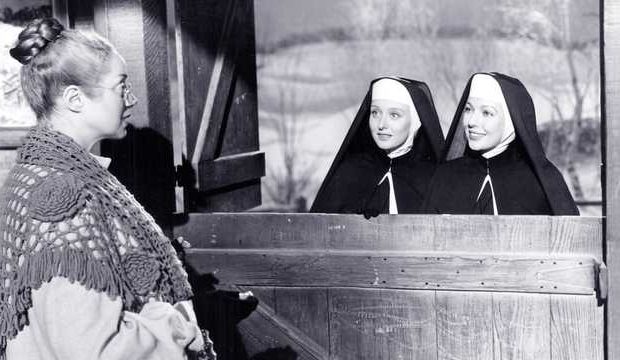
Toronto Film Society presented Come to the Stable (1949) on Monday, December 2, 2019 in a double bill with The Holly and the Ivy as part of the Season 72 Monday Evening Film Buffs Series, Programme 3.
Production Company: 20th Century Fox. Producer: Samuel G. Engel. Director: Henry Koster. Screenplay: Oscar Millard, Sally Benson, and Clare Boothe Luce, based on her story. Music: Cyril J. Mockridge. Cinematography: Joseph LaShelle. Editor: William Reynolds. Release Date: September, 1949.
Cast: Loretta Young (Sister Margaret), Celeste Holm (Sister Scholastica), Elsa Lanchester (Amelia Potts), Hugh Marlowe (Robert “Bob” Mason), Thomas Gomez (Luigi Rossi), Dorothy Patrick (Kitty Blaine), Basil Ruysdael (The Bishop), Dooley Wilson (Anthony James), Regis Toomey (Monsignor Talbot), Mike Mazurki (Sam).
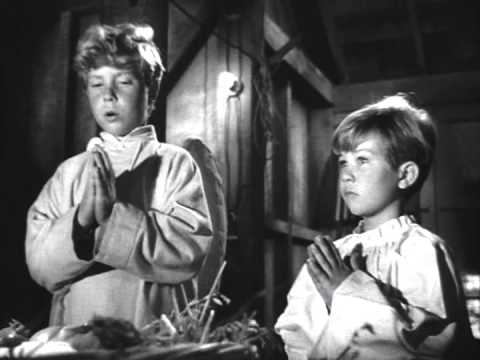
Plot: The film Come to the Stable is based on a true story (with the usual Hollywood embellishments). One winter’s night, two French nuns, Sister Margaret and Sister Scholastica, come to the small New England town of Bethlehem, where they meet Amelia Potts, a painter of religious pictures. They announce that they have come to build a hospital there, as a result of an experience during the Second World War when Sister Margaret was in charge of a children’s hospital in Normandy and persuaded an American general not to shell the hospital, which the Germans were using as an observation post. The hospital was spared at the cost of American lives and Sister Margaret vowed that, in recompense, she would return to America to build a children’s hospital there. She chose Bethlehem as a site as a result of seeing a postcard of a nativity scene painted by Miss Potts entitled “Come to the Stable”. The two Sisters experience many financial difficulties in attempting to achieve their aim and these involve considerable interaction with the local inhabitants.
Critical Response: “Well acted by Celeste Holm and Loretta Young as French nuns in the U.S., this sentimental religious melodrama was very popular in 1949, garnering 7 Oscar nominations.” (Though it won none.) “Sweet, pious entertainment of a sort that they don’t make any more.” “Surely a film that shows both its age and its seams. Come to the Stable nonetheless remains a testament to old Hollywood’s ability to sell anything it puts its mind to.”
Clare Boothe Luce (1903-1987): She was prominent throughout her career as both an author and a politician. As an author, she is best known for her hit play The Women (1936), with its all-female cast, but also for other plays, film scripts, fiction, journalism, and war reportage. She was the wife of Henry Luce, the publisher of Time, Life, and other popular journals, and was herself a leading conservative and anti-communist politician.
Henry Koster (1905-1988): Born Hermann Kosterlitz in Berlin to Jewish parents, he came from a cultured and musical family, and was hired as a scenarist and assistant director by a Berlin movie company, making his own first film as director in 1932. Already the target of anti-semitism, he went into exile after his name was deleted from the credits for his second film. After making three films in Budapest and establishing connections there with a representative of Universal films, he travelled to the United States and, despite a minimal knowledge of English, was allowed to direct the studio’s highly successful Three Smart Girls, starring the 14-year-old Deanna Durbin. He followed this with a second Durbin film, One Hundred Men and a Girl, before discovering and directing Abbott and Costello in their first film, and then a series of musicals and family comedies with major stars, such as Betty Grable. Despite being classed as an enemy alien during World War II, he was allowed to continue to work in post-War Hollywood and directed such popular successes as The Bishop’s Wife (1947); Harvey (1950), with James Stewart; and the first CinemaScope film, The Robe (1953). Further costume dramas, musicals, and family comedies followed until The Singing Nun (1965), after which he retired to concentrate on his lifelong interest in painting. He died in 1988.
Loretta Young (1913-2000): Born in Salt Lake City as Gretchen Young, she was a successful child actress after the family moved to Hollywood. She made her first film appearance in 1917, and co-starred with Lon Chaney in Laugh, Clown, Laugh in 1928. She later co-starred with Clark Gable in William Wellman’s The Call of the Wild (1935), and featured in the World War film Ladies Courageous about female pilots who delivered bomber planes from factories to their final destinations for use. She won an Oscar for The Farmer’s Daughter in 1947, and made her last theatrical film in 1953, before moving to a successful career in television in The Loretta Young Show and other programmes.
Celeste Holm (1917-2012): Her mother was American and her father Norwegian. The family travelled often, in her youth, and she attended schools in America and Europe. Her early interest in acting led to her first appearance on the stage, and then on Broadway in the late-1930s, where she received major recognition in the premiere production of Oklahoma! In 1943. She made her film debut in Three Little Girls in Blue in 1946 and followed this with supporting roles in Gentleman’s Agreement and All About Eve, before deciding that she preferred stage work to movies and limited her film appearances accordingly, turning to television instead. In the 1960s she returned occasionally to films while indulging more frequently on TV.
Elsa Lanchester (1902-1986): Born in England, she established a career in theatre and cabaret in Britain after the First World War and married the actor Charles Laughton in 1929, appearing with him in small film roles, including The Private Life of Henry VIII in 1933. After the great success of this, the couple moved to Hollywood, where she continued acting and achieved recognition in Bride of Frankenstein in 1935. She appeared in twelve films with Laughton and, after his death in 1962, appeared in several Disney films, such as Mary Poppins in 1964. One of her last roles was in Murder by Death in 1976.
Joseph LaShelle (1900-1989): He established a lengthy career in Hollywood in the mid-1920s as a cameraman and then director of photography, and has been described as “one of the enviably large band of cameramen who enriched the black-and-white style from the ’40s to the ’60s”, in particular for his work for Fox in the 1940s and for Billy Wilder in the 1960s.
Notes by Graham Petrie
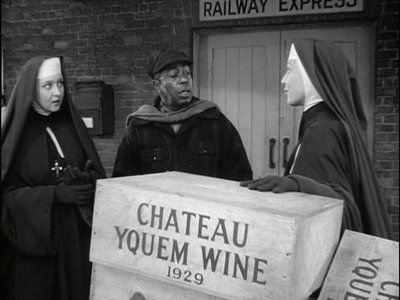
SPOT THE CANADIAN
Dorothy Patrick plays “Kitty Blaine” in Come to the Stable. Born Dorothy Wilma Davis on June 3, 1921 in St-Boniface, Manitoba, Patrick moved to New York City in her early-20s to make a go of it as an actress and model. She started off as a Powers model and was booked to do a series of ads for Chesterfield cigarettes. The “Chesterfield Girl” went on to win a 1940s Jesse Lasky Gateway to Hollywood contest and became an MGM starlet, appearing in several films before retiring in the 1950s. Henri Letondal, playing the uncredited role of Father Barraud, was born on June 29, 1901 in Montreal, Quebec. He came from a renowned Canadian musical family and studied the cello before branching off into acting, stage-directing, playwriting, critical writing, and hosting radio shows. Letondal began his Hollywood screen career in the late-1940s, taking on a series of supporting roles, before dying of a heart attack in Burbank a decade later.
Written by Leslie C. Smith

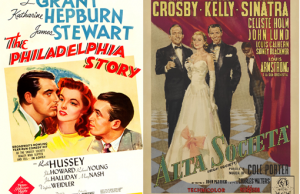
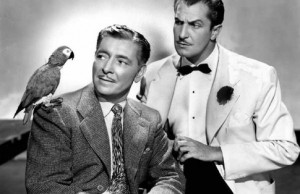
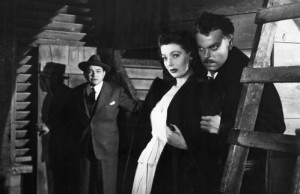






Leave a Reply